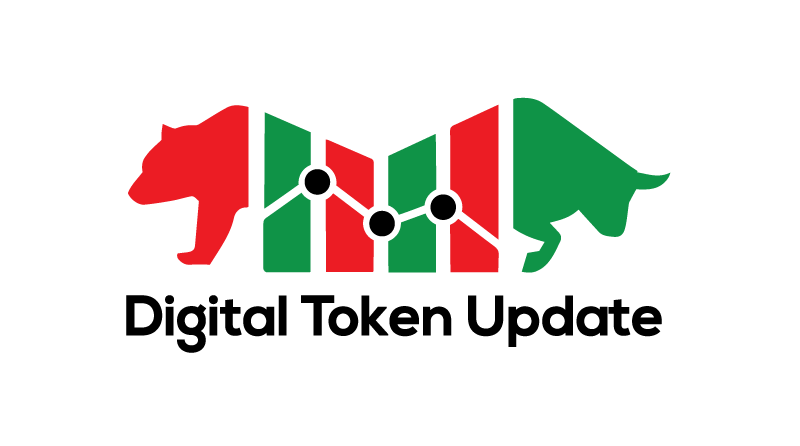Blockchain Games Key to Onboarding a ‘Critical Mass of Users Onto Web3’ — Claudio Riff

According to Claudio Riff, the CEO of Pooky, a sport prediction game powered by blockchain, gaming may be one of the more effective ways of getting users to experience the potential of blockchain and Web3 without dealing with the associated complexities.
Onboarding People to Web3 Through Gaming
Pointing to the gaming industry’s appeal and reported market value of over $200 billion in 2021, the CEO of Pooky postulated that having more blockchain-based games could potentially help “onboard a critical mass of users onto Web3.”
In written responses sent to Bitcoin.com News via Whatsapp, Claudio Riff, an early-stage investor, explained why using games to educate users about Web3 technologies is believed to be more effective than doing so the conventional way. He also highlighted the difference between sports betting and a new phenomenon known as sport prediction and why the latter is seen as a better game.
Below are Riff’s responses to the questions from Bitcoin.com News.
Bitcoin.com News (BCN): In your opinion, what is the biggest hurdle to the mass adoption of Web3 technologies?
Claudio Riff (CR): The biggest hurdle to increasing the adoption of Web3 technologies is the user experience. The need to interact with multiple interfaces, including wallets, exchanges, and Dapps, can be confusing and intimidating for users who are not familiar with blockchain and cryptocurrency. Additionally, the complexity of the vocabulary associated with Web3 technologies can be a significant blocker for potential users.
To increase adoption, we need to simplify the language and concepts associated with blockchain and cryptocurrency and create intuitive onboarding experiences that guide users through the process of getting started. We can also bridge the gap between crypto and fiat by creating seamless on-ramps and off-ramps that allow users to easily exchange between the two.
Successful Web2 platforms have created user experiences that are easy to understand and navigate even though the underlying technology (internet) is also complicated. By applying these principles to Web3 technologies, we can create a more accessible and user-friendly ecosystem that encourages adoption and growth.
BCN: What are the reasons to believe that gaming holds the key to the mass adoption of Web3 and in what ways do Web3 games help educate players about blockchain technology and Web3?
CR: Games are a powerful tool for engaging people because they provide a fun and interactive experience that can be easily personalised to a player’s interests and preferences. Games have been used for decades as educational tools to help people learn new skills, concepts, and behaviours. The success of educational games can be attributed to the fact that they make learning fun and engaging, which motivates people to continue playing and learning.
Furthermore, the gaming industry has the potential to drive mass adoption of Web3 technologies because of its massive and diverse user base. Gaming is a multi-billion dollar industry that reaches millions of people across the globe. By integrating Web3 technologies into games, developers can expose a wider audience to decentralised technologies and help drive adoption.
At Pooky, we believe that by linking our game to the world of sports, we can reach an even broader audience and help educate them about blockchain technology and Web3. Our players can learn about on-chain transactions, cryptocurrency wallets, and earning mechanisms while enjoying the excitement of predicting sports outcomes.
By making the gaming experience fun and interactive, we create a safe space for players to experiment and learn about Web3 technology. At Pooky, we are also committed to bridging the gap between gaming and Web3 technology, and we believe that by leveraging the power of play, we can drive the mass adoption of decentralised technologies.
BCN: Sports prediction can easily get confused with sports betting. What exactly is the difference here?
CR: A game like Pooky revolves around sports predictions, but it is not a traditional betting platform. Instead of risking money with incorrect predictions, players compete on weekly leaderboards for rewards. The goal is to offer an alternative to traditional betting platforms in the form of a game.
We have built Pooky using blockchain technology to enhance the gameplay and offer monetization possibilities to our players through the sale of non-fungible tokens (NFTs). Moreover, ours is a “free-to-play” game, meaning players don’t need to spend money to play, but owning a Pooky NFT is required to access higher earnings competitions.
Owning a Pooky NFT is not a financial sacrifice as it always holds value on the secondary market, which is different from traditional gambling, where the money staked is at risk of being lost. In short, in order for a game to be regulated as a form of betting or gambling, players typically need to have a financial stake or financial sacrifice in the game.
However, with a sport prediction game, players do not have either of these elements. Specifically, players cannot lose their NFT during the game, so there is no stake, and the NFTs are always tradable on the secondary market, so there is no financial sacrifice. Therefore, Pooky is not subject to the same regulations as traditional forms of betting or gambling.
BCN: What is a no-risk sport prediction model and how does it work?
CR: A no-risk sport prediction model is designed to eliminate the risk of losing assets during the prediction game. To participate in high rewards leagues, players need to hold a Pooky NFT also known as Pookyball which gives them the right to enter the game. If players use their skills and adopt the correct strategy, they can rank and earn rewards from a pool that is filled by taking a percentage of the different spendings in the app.
While there is a risk associated with the value of the NFT, this risk is limited because the more players engage with the Pooky game, the more PXP (experience points) they earn, which unlocks the possibility to upgrade their NFT by increasing its boost effect on points earned in the prediction game. Therefore not only skills but also the time invested in the platform is therefore rewarded. The value of the NFT depends on the offer and demand on the secondary market, which in turn will depend on the popularity of the game. We are convinced by the power of our game to gather the largest sports fan community in the world.
BCN: Compared to Web2, Web3 games introduce new elements like onchain assets and behavior, which makes it even more difficult to optimize for the best user experience. So how then do you ensure a great player experience and how has it improved the engagement?
CR: We ensure a great player experience by incorporating feedback from our players and continuously iterating on the game to add new features without complicating the experience. Our approach has improved engagement by simplifying the onboarding process and gradually introducing new features and new leagues to predict on. As a result, we have seen an increase in weekly engagement, with close to 5,000 active unique predictors in recent weeks.
Furthermore, we have observed a steady week-on-week growth in the number of predictions made by our users. Currently, the total number of in-app predictions stands at 700,000, and we anticipate surpassing the 1 million mark in early April. This trend is indicative of the platform’s increasing popularity and the engaging nature of the gameplay experience offered by Pooky.
Our engagement rate is further validated by the fact that players are participating in supplemental game loops, such as levelling up their NFTs, re-pressurizing their assets, and engaging in other activities. With over 30% of players having already levelled up within the game, this indicates a high level of engagement with the platform and serves to validate our game design.
BCN: Do you believe that app-specific blockchains like Polygon Supernets, Avalanche subnets, and Binance’s bnb application sidechain (BAS) have a role in accelerating the growth of Web3 gaming?
CR: App-specific blockchains have the potential to play a significant role in accelerating the growth of Web3 gaming. These blockchains are designed to provide a more efficient and scalable infrastructure for Dapps, which is critical for gaming platforms that require high throughput and low latency.
By leveraging these specialised blockchains, game developers can build more complex and sophisticated games that are not possible on the main Ethereum network due to its scalability limitations.
For example, we chose Polygon due to its fast and low-cost transactions that can enable seamless in-game purchases and asset trading. Overall, app-specific blockchains can provide the scalability, performance, and flexibility that are needed to drive the growth of Web3 gaming.
BCN: Now with respect to gaming guilds, it has been said that these have helped take blockchain games to the masses, yet we have not seen many successful Web3 games. Where are they failing?
CR: Overall, gaming guilds have played an important role in promoting the adoption of Web3 games, but there are still several challenges that must be addressed for these games to achieve mainstream success. These include improving the user experience, enhancing gameplay and content, and increasing interoperability across different platforms.
One significant challenge is the complexity of blockchain technology, which can intimidate and confuse users who are not familiar with it. This creates a high barrier to entry and a steep learning curve, discouraging potential players. To address this issue, we have prioritised making blockchain technology seamless and easy to use. We offer payment solutions through credit cards in addition to direct crypto payments, and we help users create wallets using social logins. We also plan to sponsor gas fees while educating users on these core concepts.
Another challenge is the lack of engaging gameplay and content in many Web3 games. This can make them feel repetitive and boring over time, limiting their appeal and longevity. To tackle this problem, we introduced supplemental game loops featuring new elements like energy and pressure. We also plan to incorporate metagame features, which will allow players to take on different roles and interact with each other in more meaningful ways, slowly shifting towards a creator’s economy.
Furthermore, to increase the social aspect of the game, we are soon introducing “Rivals” a feature that will allow players to compete directly against other players, and later on, we will offer the possibility to create customizable private leagues where players can compete with their community members.
Overall, by addressing these challenges, we are working towards creating a more accessible and engaging Web3 gaming experience for all players.
What are your thoughts about this interview? Let us know what you think in the comments section below.

